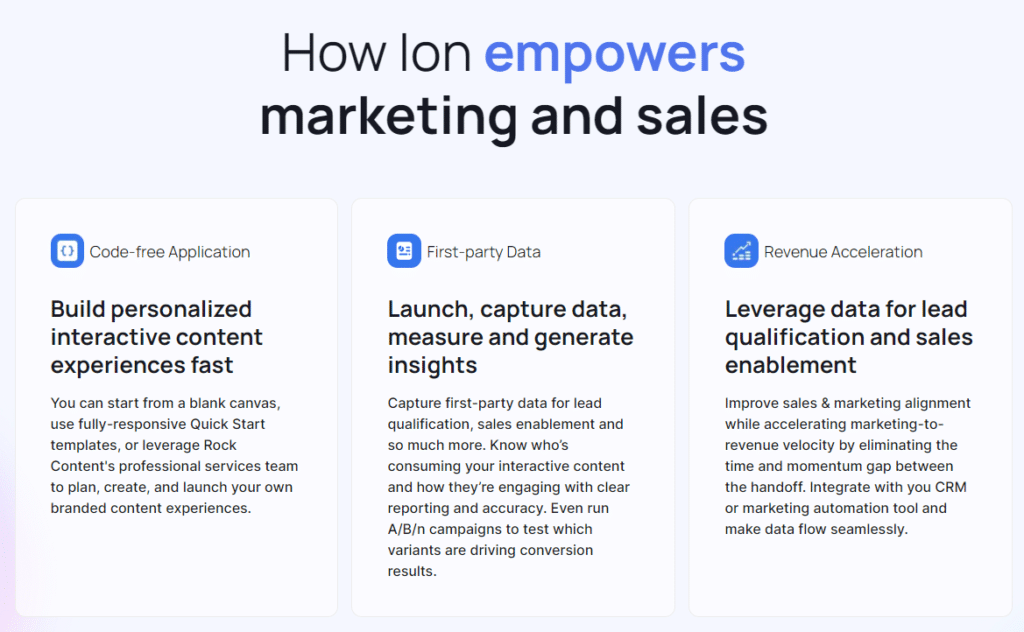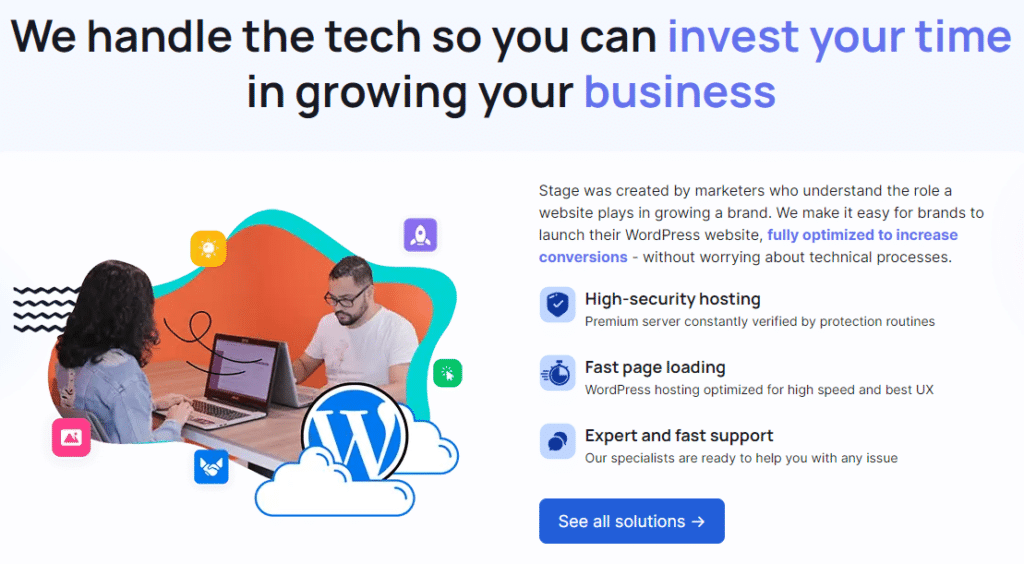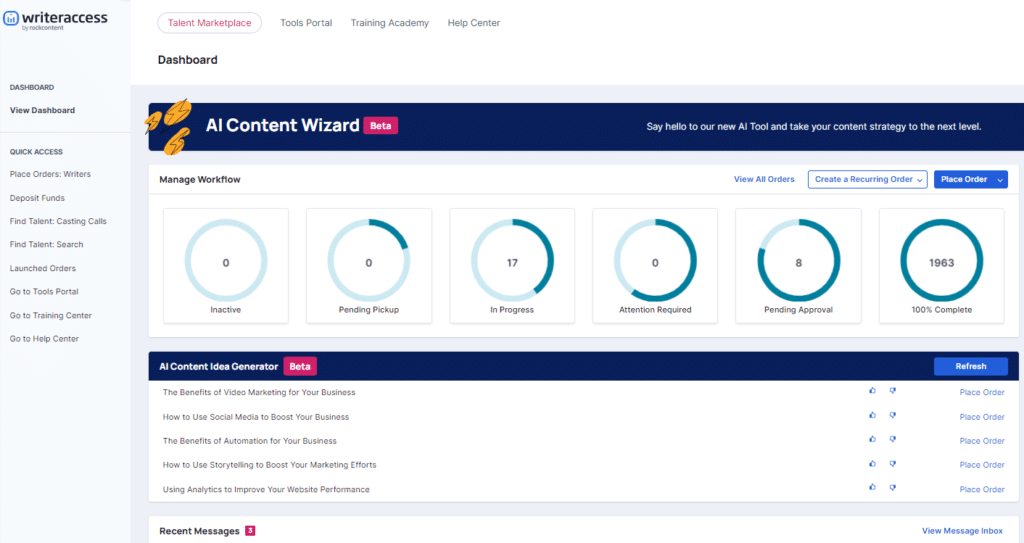Gone are the days when you could develop a following without a website. Even as an established business, your online presence matters more than you may realize.
Think of it this way: Your competitors are all online, and if you don’t have a website, they’re going to capture all the traffic that could be yours. That said, website development must be part of your digital marketing strategy.
Fortunately, it has never been easier. You don’t need programming skills or knowledge, and you can create a polished site much faster than you think.
Plus, with solutions like Content Cloud, you can start sharing content immediately and build your audience in no time.
Download this post by entering your email below
Understanding Website Development
Developing a successful website involves a lot more than purchasing a domain and having a few pages online. Users are much more tech-savvy than in years past, and they know what they like when visiting a new site.
So, when developing a new website, you must keep these elements in mind:
- User Experience (UX) – Put yourself in the shoes of a new person visiting your site for the first time. What draws your attention first? What kind of vibe do you get from the site immediately? Is the site easy to navigate or complicated? If you were trying to find something (i.e., a contact form), is it easy to do? Developing a streamlined and focused user experience is crucial for the next part – conversions.
- Conversion Rate – Regardless of the type of website you’re developing, you want each visitor to do something when they arrive. That action could be to buy a product, read a blog post, request a quote, subscribe to an email list – anything. Once you know what each page should be trying to do, it’s much easier to develop the page around that action. For example, if you want the visitor to buy a product, there should be a “Buy Now” button front and center.
9 Key Steps in Website Development
Thinking about the elements above is a good start, but it won’t help you develop a comprehensive and valuable website from scratch.
Once you reach the end of this list, you should be well on your way to building a high-quality site that will convert leads and drive long-term success.
1. Defining goals and objectives
We already touched on creating goals for each page of your website. However, before you can think about those, you first must determine the purpose of your site.
Also, keep in mind that a website can fulfill multiple purposes; that’s why you build additional pages. However, by understanding what those goals are from the beginning, you can stay focused through every step of the process.
Some examples of goals can include:
- Increase Brand Awareness – If you’re a small business or a startup, you want to get your name out there as quickly as possible. So, make sure the site aligns with your brand guidelines and persona. If you haven’t developed these components yet, do that first.
- Increase Sales – Even if you run a brick-and-mortar business, you should also sell some products online. However, if you only want to drive physical traffic to your store, your site can still do that. One of the best ways is to get visitors to sign up for an email list, so they can get access to discounts and new merchandise before everyone else.
- Expand Your Market Share – As your business grows and succeeds, you’ll need to expand into new markets so you can capture more customers and elevate your brand’s status. So, you may need to create multiple sites for different offices or regions, complete with unique color schemes, cultural elements, and more.
2. Conducting thorough audience research
Before you can start achieving your goals, you need to know who you’re targeting with your site. Who is your ideal visitor, and why have they come across your website?
Customer avatars can help you narrow your focus and ensure that your pages are appealing to the right person at the right time.
Audience research can also help with the functional development process. For example, if you’re trying to appeal to a younger audience, you want to be active on social media and make your site more mobile-friendly.
If you’re appealing to an older crowd, you may want to use larger fonts and more traditional design elements.
3. Planning the website’s structure
Even a simple blog site can have a relatively complex structure, especially as you add new pages and functions. So, it’s imperative to build that structure first as part of your website development efforts, so you know where you’re heading.
Otherwise, it’s easy to get overwhelmed with new pages, some of which may not be accessible to your audience.
Again, having your goals in mind can help you stay focused on the ideal site structure. For example, if you’re trying to sell products, you want to create a dynamic and captivating template for each listing. This way, you can direct users to product pages and have a high chance to convert them into customers.
4. Designing an aesthetically pleasing and responsive interface
Once you have the basics figured out, then you can dress up your site to make it more appealing. Some design elements to pay attention to include:
- Font Styles – Is your brand bold and innovative or luxurious and elegant? The fonts you use for each page will help reinforce these elements, so users have a clear idea of what to expect.
- Color Scheme – While you don’t want to overload your site with too much color, you should pick two or three that represent your brand.
- Images and Graphics – You can get access to millions of photos and illustrations online, so make sure to pick ones that reflect your brand’s aesthetic.
Additionally, you want to avoid going overboard with too many design elements. Overall, you want to keep your site simple and easy to use.
Keep in mind that each new image, graphic, or button may slow your site speed, which can do more to increase your bounce rate than anything else.
5. Developing website functionality and interactivity
The basic function of a website is to be easy to navigate. Users should be able to find what they need quickly and click on the page they want.
The more clicks necessary to reach a specific destination, the more likely that someone will leave the site immediately.
That said, interactive content and pages can make it more enticing for visitors to stay. For example, you can incorporate elements like surveys and quizzes to customize the user experience.
Tools like Ion allow you to incorporate these interactive elements to deliver creative experiences while gathering data for lead qualification.

6. Implementing proper SEO techniques
It’s no secret that search engines are the primary source of traffic for new site pages. While you can pay for ads to generate this traffic, it’s best to build it organically first.
So, you must invest in high-quality SEO content that will get your pages ranked higher in search results. Keyword and traffic research can help you figure out which terms to rank for the most, so you can build an audience faster without having to pay big bucks.
7. Integrating social media sharing
Beyond search engines, social platforms are also an excellent source of traffic for your website. So, the easier it is to promote your content on social media, the more likely you can capture audiences from these sites.
In addition to sharing content on your own social profiles, you should make it easy for users to share elements like blog posts, proprietary images, and videos.
Basically, turn your audience into brand ambassadors, so you can generate more free traffic and build your business organically.
8. Employing responsive design for mobile interfaces
More people are interacting with websites on mobile devices than ever before. Fortunately, website development software like WordPress allows you to optimize your content for mobile devices easily.
While you still have to tweak specific elements, so they fit better on a smaller screen, you don’t need to do any programming or back-end work.
Again, consider your audience and how they’ll interact with your site. If most of your traffic comes from mobile devices, you should take a mobile-first approach to development and then adjust your desktop version afterward.
9. Choosing the right hosting platform
No matter how amazing your site is, no one will be able to visit it without the right hosting platform. Programs like Stage make it easy to host your site, so visitors can get the best experience from anywhere in the world.
Part of what makes Stage so valuable is that it uses a content delivery network (CDN). CDNs keep content on local servers so the site loads quickly, even if you have a lot of images and videos on each page.

10. Planning your content creation strategy
You need to create a foundation for developing, publishing, and promoting content quickly. This way, you can build an audience and keep your visitors engaged when they come to your site.
Overall, when creating a content development strategy, consider the type of content you’ll be producing, how you’ll create it, and where you’ll publish it.
Content Creation for Website Development
Developing compelling content for your website is relatively simple, but it can be time-consuming. So, before you pull the trigger, you need to make sure you’re pointed in the right direction. Here are some elements to pay attention to when creating your content marketing strategy:
- Keyword Research – Knowing which keywords people are searching for the most will help you develop trending content that can capture more traffic. Then, once people are on your site, they can browse additional content that may interest them.
- High-Value Production – Whether you’re generating a blog post, a video, an infographic, or something else, you need to make sure it looks professional and polished. While you don’t need a high production budget to get great content, you should invest in some kind of outsourcing. For example, WriterAccess can connect you with talented copywriters around the world, and it’s more affordable than you might think.
- Incorporating Visuals – People pay more attention to visuals online than anything else. So, you need to make sure you have the photos, graphics, and video elements that will make your content pop. If possible, adding animations or stylized images can help direct traffic to your site.
- Keeping Content Structured and Scannable – Online attention spans are notoriously short, so you have to make your content easy to digest (especially with so much competition). While you can do deeper dives on different topics, you should break up text and video with different visual elements, headings, charts, bullet points, and more. Ideally, someone should be able to get a decent amount of information by scanning your content first before consuming the whole thing.
- Regularly Updating and Curating New Content – Momentum is crucial when developing new content for your brand. If you stop for several weeks or months, it’s hard to get back on track. Keep in mind you can re-publish old content, particularly as you gain more followers and subscribers. This way, you can augment new stuff with old and figure out which pieces get the most traction.

Tools and Technologies for Website Development
Fortunately, we’re living in the golden age of content tools, so it’s easier than ever to develop, scale, and distribute your pieces to the masses. We have already mentioned some great tools and technologies for website development, here are a few more top options for different stages of it.
Keyword research
As we mentioned, knowing the top trending keywords can help you get more traffic and develop content that people want to see.
Semrush has one of the best keyword research tools available, complete with actionable insights so you know what to do with the information.
Content management systems
Curating and publishing content for your website can be a lot of work, which is why a comprehensive content management system can help.
This way, you can craft posts, publish videos, add imagery, and publish to multiple platforms without needing any programming knowledge.
At Rock Content we use WordPress for being robust, reliable, and user-friendly, making it the ideal platform for creating nice and functional websites.
Social media posting
Social media sites are excellent sources of traffic, but you have to post regularly across each platform to build and maintain an audience.
Tools like Sprout Social allow you to connect all of your profiles, schedule content, and engage with users directly from a single dashboard.
Now, you can spend a few hours each month building a content distribution plan instead of several hours a day.
Visual elements provider
Having the right visual elements can differentiate your brand from everyone else in your industry.
Everything – from logos to blog images to video elements – matters. You can get stock imagery from sites like Pexels or Unsplash, video elements from sites like Storyblocks, and interactive content pieces from Ion.
Build a Better Website With the Content Cloud From Rock Content
Embarking on the journey of website development is a pivotal step, and fortunately, it has never been more accessible.
Regardless of whether you’re an ambitious solopreneur or a thriving mid- to large-scale enterprise, Rock Content’s Content Cloud is here to revolutionize the way you create web pages and captivating content.
With our extensive range of user-friendly tools at your disposal, you’ll be amazed at how effortlessly you can establish a compelling online presence.
Take a moment to explore our offerings and witness firsthand the simplicity with which you can achieve remarkable success. Your digital triumph is just a few clicks away!
2024 State of Marketing Report
Your golden ticket to crush your goals with data-driven insights!
2024 State of Marketing Report
Your golden ticket to crush your goals with data-driven insights!

![[Rock NA] State of Marketing Reports 2024 – Comkt Hubspot State of Marketing Report 2024](https://rockcontent.com/wp-content/uploads/2022/07/Banner-Fino-Rock-Convert-2500-%C3%97-500-px-19.png)






